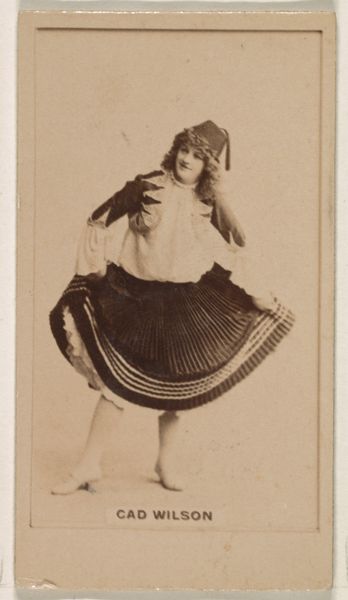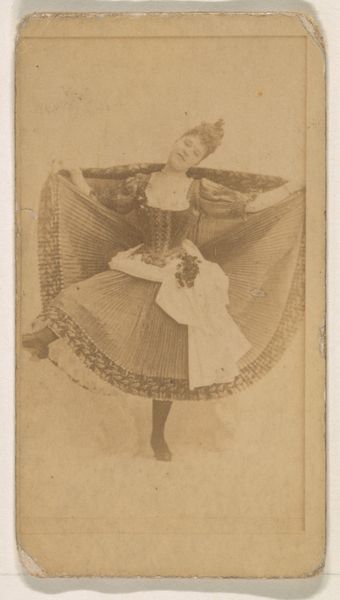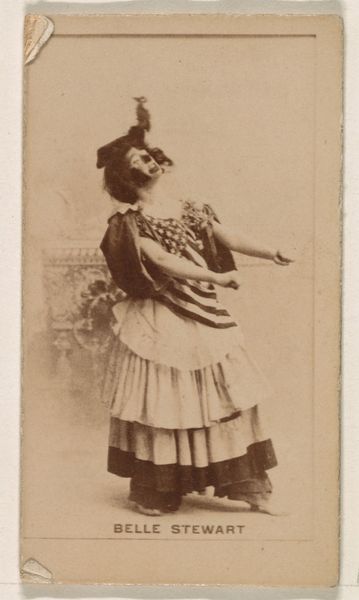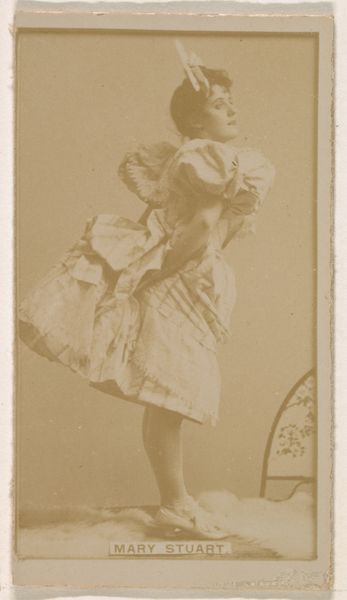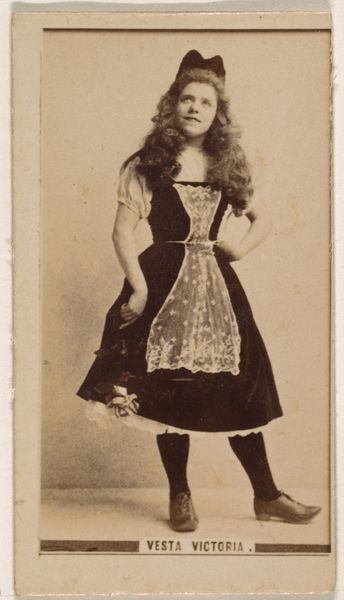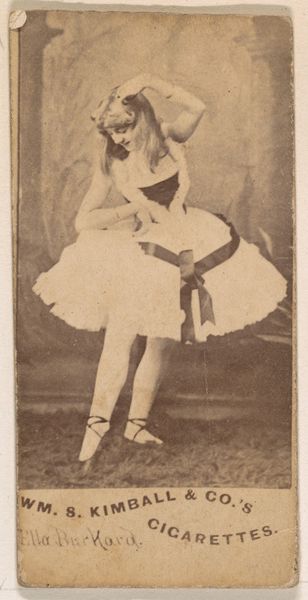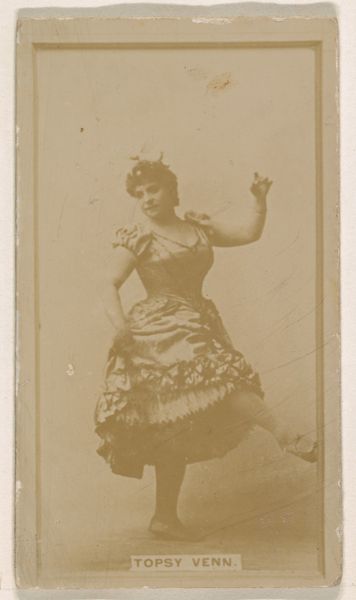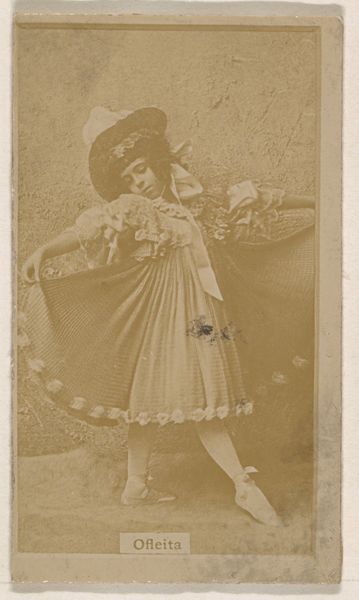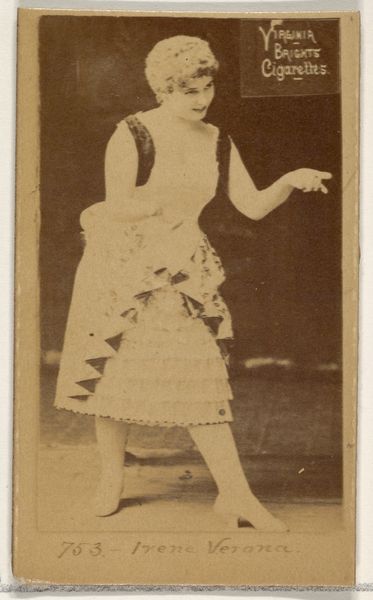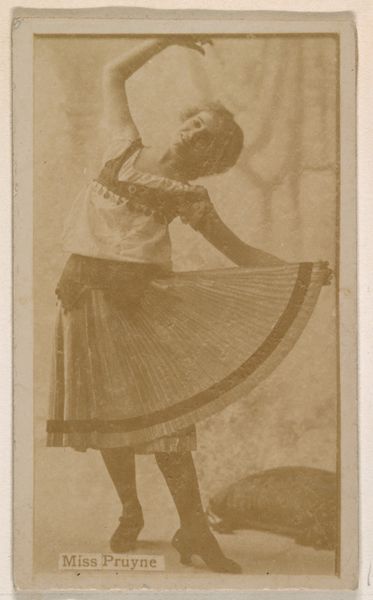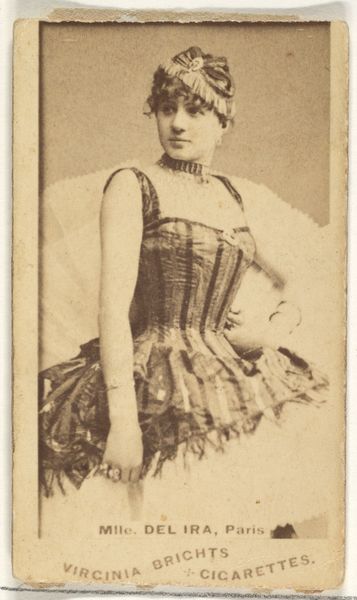
#
aged paper
#
homemade paper
#
paper non-digital material
#
pale palette
#
paperlike
#
sketch book
#
paper texture
#
personal sketchbook
#
folded paper
#
paper medium
Dimensions: Image: 7 3/8 × 9 1/4 in. (18.8 × 23.5 cm) Album page: 10 3/8 × 13 3/4 in. (26.3 × 35 cm)
Copyright: Public Domain
Editor: Here we have André-Adolphe-Eugène Disdéri's "Elise Parent; Corinne," created in 1861. It's a photograph presented in a sketchbook. The series of poses gives it almost a flip-book animation effect, but there's also something unsettling about the repetition. What stands out to you? Curator: It's interesting you find the repetition unsettling. Considering Disdéri's role in popularizing the carte-de-visite, a calling card featuring a photographic portrait, the multiplication of the dancer reflects the increasing accessibility of photographic images to the wider public. Does that influence your impression at all? Editor: I suppose it contextualizes it a bit. So, these photographs weren't necessarily meant for artistic appreciation, but were a kind of social currency? Curator: Precisely. These cartes-de-visite democratized portraiture, moving it away from the realm of the elite painted portrait. What implications might this have had on social structures at the time? Editor: That's a great point. I hadn’t thought about how photography offered more accessible representation. The average person could, perhaps for the first time, circulate images of themselves. It’s like early social media! I can see how that could shift established hierarchies of representation. Curator: Exactly. The accessibility challenged traditional modes of visual power, offering opportunities for new voices and faces to enter the public sphere. Editor: Wow, seeing it through that lens changes my perception entirely. The repetitive poses now feel like a statement about accessibility and democratization, rather than something unsettling. Curator: Thinking about photography's place in 19th century society gives the work a deeper context, and illuminates its initial appeal, its cultural impact and historical legacy. It seems mundane, but it changed our world.
Comments
No comments
Be the first to comment and join the conversation on the ultimate creative platform.
